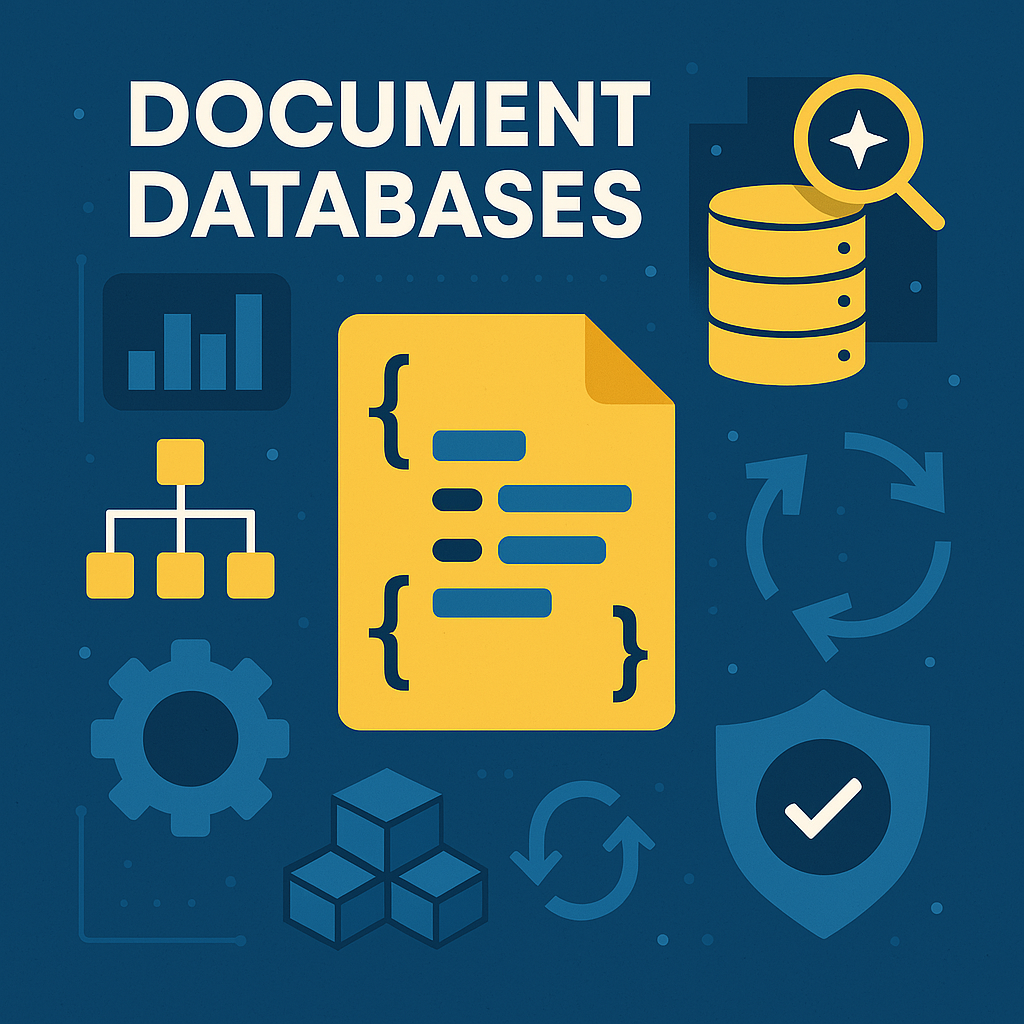What Are Document Databases?
Document databases are a type of NoSQL database that store data in flexible, semi-structured formats, typically using JSON or BSON. Rather than rows and columns like in relational databases, document databases use "documents". Self-contained data structures that include fields and values, much like objects in code. This format mirrors how modern applications work, making document databases particularly developer-friendly.

Each document can have its own structure, which means fields can vary across entries in the same collection. This makes them ideal for managing diverse, evolving datasets without requiring schema migrations.
Top Advantages of Document Databases
-
Schema Flexibility: Document databases allow each document to have a different structure. This enables developers to iterate and update application features without needing to redefine the database schema, speeding up development cycles.
-
Horizontal Scalability: These databases are built for scale. They can handle massive volumes of data by distributing it across multiple servers or clusters, making them great for cloud-native applications.
-
High Performance: Because document databases store entire objects in a single document, most queries only need one lookup. This improves read and write performance, especially when compared to databases that require multiple joins.
-
Developer-Focused Design: Storing data in a format that closely matches the structure used in code (like JSON) simplifies development. This reduces the need for complex object mapping and lets developers work more efficiently.
-
Powerful Querying: Despite being schema-less, document databases offer robust querying capabilities, including filtering, indexing, and aggregation. You can query deeply nested data with precision and speed.
-
Built-in Redundancy and Availability: Most document databases offer replication and automatic failover features, helping to ensure your application remains up and running even when hardware fails.
Top Document Databases for Software Development
-
MongoDB: One of the most popular document databases, MongoDB is open-source and highly flexible. It supports complex queries, indexing, and aggregation, and scales well both vertically and horizontally.
-
Couchbase: Couchbase combines caching and persistent storage, making it ideal for high-performance applications. It supports a SQL-like query language for JSON and offers built-in replication and scaling.
-
Amazon DocumentDB: This fully managed service from AWS offers MongoDB compatibility and handles scaling, backups, and patching for you. It's a go-to for teams already using AWS infrastructure.
-
Azure Cosmos DB: Microsoft’s globally distributed document database supports multiple APIs and provides automatic indexing, global replication, and low-latency reads and writes.
-
Google Cloud Firestore: A serverless, real-time database from Google, Firestore is designed for mobile and web apps. It supports live synchronization and offline mode, making it perfect for collaborative or real-time use cases.
Document databases provide the flexibility, performance, and scalability needed for modern applications. With support for varied data structures, real-time updates, and large-scale distribution, they empower teams to build software that can evolve and grow.
At Code Scientists, we help you identify the best data architecture for your needs. Whether you’re building a dynamic web app or a large-scale cloud service, we guide you through selecting and implementing the right document database to support your goals.
Ping us to discuss how we can help you integrate the right document database into your next software solution.
